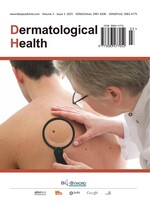Development, Classification, Application, and Research Progress of Modern Skin Photoaging Assessment Tools
Abstract
Skin photoaging, a degenerative process caused by ultraviolet radiation, plays a pivotal role in clinical diagnosis and anti-aging research. This paper systematically reviews the evolution of skin photoaging assessment tools, tracing their development from traditional clinical scoring systems to modern imaging technologies, biomarker detection, and AI-assisted analysis. It provides detailed categorization, application scenarios, and comparative evaluations of these methodologies. The study reveals that single-assessment tools have inherent limitations, while multimodal integrated evaluation has emerged as the prevailing approach. Future efforts should focus on integrating molecular biology and AI technologies to establish a more precise photoaging assessment framework.
References
Wang YX, Jia NQ, Li J, et al., 2024, Organoids as Tools for Investigating Skin Aging: Mechanisms, Applications, and Insights. Biomolecules, 14(11): 16–17.
Kong Y, Guo Y, 2021, Construction and Effect Evaluation of Skin-photorejuvenation Mouse Model. Journal of Laboratory Animals and Comparative Medicine, 41(2): 116–121.
Yan CX, 2018, Application of VISIA to Quantitatively Evaluate Facial Skin Aging Parameters in Women in the Central Plains Region, thesis, Zhengzhou University.
Yang R, He PZ, Wang HZ, et al., 2018, Skin Aging Assessment Based on Fully Open Unimodal Nuclear Magnetic Resonance Technology. Journal of Biomedical Engineering, 37(1): 86–90.
Zeng M, Xu L, 2014, Research Progress on Skin Aging Mechanism and Aging State Assessment Method. Chinese Journal of Cosmetic Medicine, 23(23): 2025–2028.
Zhu W, Su W, Lian S, 2008, A Study on the Efficacy Evaluation Methods of Intense Pulsed Light Therapy for Cutaneous Photoaging. Chinese Medical Association and Chinese Medical Association Dermatology and Venereology Branch. Proceedings of the 14th National Academic Annual Conference on Dermatology and Venereology. Department of Dermatology, Xuanwu Hospital, Capital Medical University, 25(5): 78–80.
Su W, Zhu W, Lian S, 2008, Evaluation Method of the Efficacy of Intense Pulsed Light Therapy on Skin Photoaging. Journal of Practical Dermatology, 1(1): 45–47.
M2 Presswire, 2021, Face Tester Detector Machine Skin Care Tools Skin Aging Treatment Smart Facial Magic Mirror Analyzer Machine. M2 Presswire, 17(13): 45–46.
Emanuela B, Sara C, Giuseppe G, et al., 2021, Natural Compounds and PCL Nanofibers: A Novel Tool to Counteract Stem Cell Senescence. Cells, 10(6): 1415.
Pereira AFM, Manzolli RB, Neto L, et al., 2021, On the Effect of Excessive Solar Exposure on Human Skin: Confocal Raman Spectroscopy as a Tool to Assess Advanced Glycation End Products. Vibrational Spectroscopy, 23(6): 34–36.
Mataix M, Luna RA, Pérez GM, et al., 2020, Deschampsia Antarctica Extract (Edafence®) as a Powerful Skin Protection Tool Against the Aging Exposome. Plastic and Aesthetic Research, 7(12): 67–69.
Borges LVI, Galdorfini BC, Marques JM, et al., 2015, Rheology as a Tool to Predict the Release of Alpha-Lipoic Acid from Emulsions Used for the Prevention of Skin Aging. BioMed research international, 18(6): 66–68.
Lee HJ, 2014, Translational Aspect of using Proteomics Tool for Skin Aging Research. The Korean Society of Biotechnology Academic Conference, 8(11): 41.
Lee HJ, 2014, Translational Aspect of using Proteomics Tool for Skin Aging Research. Academic Conference of the Korean Society for Biotechnology, 9(2): 366–368.
Denise D, Rose S, Lieve D, et al., 2009, Calculation of Apparent Age by Linear Combination of Facial Skin Parameters: A Predictive Tool to Evaluate the Efficacy of Cosmetic Treatments and to Assess the Predisposition to Accelerated Aging. Biogerontology, 10(6): 757–772.

